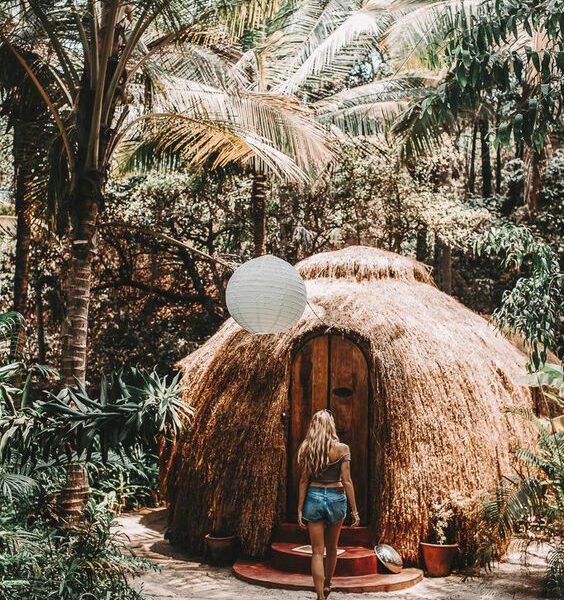What is the goa style?
Goa is an electronic music genre that originated in the Goa province on the west coast of India in the late 1980s and early 1990s. The Goa style is known as a subgenre of psychedelic trance music and is often intertwined with psychedelic culture and electronic dance music events.
Goa style music is typically fast-paced (usually above 130 BPM) and features psychedelic sounds such as screaming synthesizers, special sound effects and lively rhythms. The genre also shows many influences from Indian culture, such as Indian instrumentation and mantra recordings.
The goa style spread worldwide in the 90s and became popular among those who attended electronic dance music events. The music in this genre is often long and expansive, creating a sense of travel and psychedelia for the listener.
The goa style has remained an important branch of psychedelic trance, and over the years has spawned many sub-genres and variations, such as full-on goa, darkpsy, forest, and many more. In the world of electronic music subcultures and festivals, the goa style continues to have a significant impact on the musical and cultural scene.
What are the subspecies of goa?
Many sub-genres and variations of Goa music have evolved over the years. These sub-genres represent different musical styles, soundscapes and soundscapes, while still remaining linked to the Goa style. Some popular Goa sub-styles and sub-genres:
- Full-On Goa:Full-on goa is an energetic and intense subgenre of goa music. It is characterised by a fast tempo and intense psychedelic elements such as powerful synthesizers and sound effects. This subgenre usually offers fun and bouncy music on the dancefloor.
- Progressive Goa: Progressive goa focuses on slower and progressive musical elements. Emphasis is placed on deeper rhythms and slower build-ups, allowing for longer tracks and a sense of journey.
- Darkpsy (Dark Goa): Darkpsy is a darker and more psychedelic version of goa music. It works with special sound effects, distorted sounds and mysterious atmospheres. Dark goa often contains deep, hypnotic rhythms.
- Forest Goa:The forest goa style is dominated by natural and organic sounds. It refers to the forest and the natural environment and contains sounds that are reminiscent of those found in the forest.
- Suomisaundi: Originally from Finland, Suomisaundi combines Goa music with Finnish humour and creativity. In this sub-genre you can often find funny and abstract sound elements.
- Twilight Goa:Twilight Goa focuses on darker and nocturnal sounds, with strong bass, dark atmospheres and hypnotic tones.
These are just a few examples of the sub-styles of Goa music. The wide range of Goa music and psychedelic trance offers many unique and special sounds and is constantly evolving with new variations and concepts.
Does the Goa style include tribal and folk genres?
The goa style is a psychedelic trance music genre, which originates primarily from electronic music. Although Goa music contains psychedelic elements and cultural influences, it generally does not include tribal and folk genres in its basic sound. Rather, goa music is dominated by the characteristic elements of electronic music and psychedelic trance, such as synthesizers, rhythms and sound effects.
However, some Goa bands and producers experiment with bringing together different cultural and musical influences, so some Goa music may contain tribal or folk elements. These influences may include ethnic rhythms, traditional instruments, singing or other folk music traits. Such music tends to fall into the fusion or world music style, which combines electronic music with traditional musical elements.
So although the Goa style is basically part of psychedelic trance and electronic dance music, individual bands and producers can experiment with other cultural styles and musical elements in their own creations. However, in the case of such music, the boundaries of the goa genre are often abandoned or extended.
Can the Goa style be described as bohemian?
The Goa style is a musical genre and the roots of Goa culture are indeed linked to the bohemian lifestyle and alternative lifestyle, but it is important to understand that the Goa style is a musical genre in itself and the bohemian lifestyle may be more characteristic of the people living in and around the Goa province.
The Goa style is a subgenre of psychedelic trance, and emerged in the late 1980s and early 1990s in the Goa province on the west coast of India. The people who developed and popularised the Goa style were often part of the hippie movement and psychedelic culture. As a result, the Goa style is characterised by a freedom-loving and alternative lifestyle, and the music often reaches listeners at going-away parties and electronic dance music festivals.
The province of Goa, especially the Anjuna Beach area, has long been an attractive destination for long or short stays from all over the world, especially for those who enjoy a bohemian lifestyle. The local culture and lifestyle is much less tied to the traditional way of life and reflects more a commitment to freedom and the arts.
Overall, then, the Goa style and Goa culture has bohemian elements and is often attractive to those who enjoy a bohemian lifestyle. However, the Goa style is primarily a musical genre, listened to and produced by a wide variety of people, and the culture and lifestyle shows individual variability.
Some Goa musicians/bands
Some of the renowned Goa musicians who have contributed to the popularisation of the genre and created excellent Goa music:
- Astral Projection: The Israeli goa trance duo Avi Nissim and Lior Perlmutter are among the defining figures of the goa style. They have produced many classic Goa tracks.
- Infected Mushroom: Another Israeli psychedelic trance duo, led by Amit Duvdevani and Erez Eisen. Their music blends a wide range of musical styles, with many elements of goa trance.
- Goa Gil: Goa Gil is a DJ and producer known in the electronic music and Goa genre. He is known for his extraordinary long sets and psychedelic musical choices.
- Hallucinogen (Simon Posford): Simon Posford is a psychedelic trance musician known as Hallucinogen, whose music is highly psychedelic and considered by many to be cult.
- Shpongle: Shpongle is another project created by Simon Posford with British music producer Raja Ram. Their music is a harmonious fusion of psychedelia and electronics.
- 1200 Micrograms: An Israeli project that creates Goa music with humour and psychedelia. One of the members is Raja Ram.
These are just a few examples of musicians who have played a prominent role in Goa music. There are many talented Goa musicians and producers in the electronic music world who contribute to the continued growth and popularisation of the genre with their unique style and music.
This article was sponsored by ChatGPT 🙂




